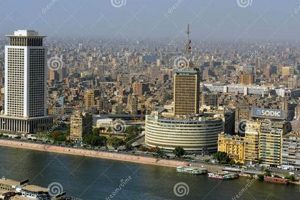Skyscraper window cleaning is the process of cleaning the exterior windows of tall buildings. It is a specialized and dangerous job that requires specialized equipment and training.
Skyscraper window cleaning is important for several reasons. First, it helps to maintain the appearance of the building. Clean windows make a building look more attractive and well-maintained. Second, clean windows allow more natural light to enter the building, which can reduce energy costs. Third, clean windows help to prevent accidents by reducing glare and providing a clear view of the outside.
The history of skyscraper window cleaning dates back to the early 1900s, when skyscrapers first began to be built. At first, window cleaners used simple tools such as ladders and ropes to clean windows. However, as skyscrapers became taller and more complex, new methods of window cleaning had to be developed.
1. Safety
Skyscraper window cleaning presents unique safety challenges due to the extreme heights involved. Specialized equipment and training are crucial to mitigate risks and ensure the safety of window cleaners:
- Specialized equipment: Window cleaners use a range of specialized equipment, including motorized platforms, suspended scaffolds, and water-fed poles, to safely access and clean windows at great heights. These tools provide stability, mobility, and reach, enabling window cleaners to work efficiently while minimizing risks.
- Training: Window cleaners undergo rigorous training to develop the skills and knowledge necessary for working at heights. This includes training on equipment operation, safety protocols, emergency procedures, and proper cleaning techniques. Certified training programs ensure that window cleaners are competent and capable of performing their duties safely.
- Personal protective equipment: In addition to specialized equipment, window cleaners wear personal protective equipment (PPE) such as harnesses, lanyards, and helmets to minimize the risk of falls and other accidents. PPE helps protect window cleaners from potential hazards and provides an additional layer of safety.
- Safety protocols: Strict safety protocols are established and followed during skyscraper window cleaning operations. These protocols include thorough risk assessments, weather monitoring, and emergency response plans. By adhering to these protocols, window cleaning companies prioritize the safety of their workers and minimize the chances of accidents.
The combination of specialized equipment, training, PPE, and safety protocols ensures that skyscraper window cleaning is carried out with the utmost safety, allowing window cleaners to perform their essential tasks while minimizing risks.
2. Equipment
Skyscraper window cleaning demands specialized equipment to ensure safety and efficiency at extreme heights. Advanced tools and technologies play a crucial role in enabling window cleaners to perform their tasks effectively:
- Motorized platforms: These platforms provide a stable and mobile work surface, allowing window cleaners to reach and clean windows on high-rise buildings safely and efficiently. They offer greater mobility and flexibility compared to traditional scaffolding, enabling window cleaners to access hard-to-reach areas.
- Water-fed poles: These extendable poles use purified water to clean windows, eliminating the need for harsh chemicals or detergents. The water is fed through the pole and released through a brush head, allowing window cleaners to clean windows from the ground or from a safe distance. Water-fed poles promote sustainability and reduce the risk of damage to window frames or seals.
- Specialized cleaning tools: In addition to motorized platforms and water-fed poles, window cleaners use a range of specialized tools designed for high-rise window cleaning. These tools include squeegees with extendable handles, microfiber cloths, and specialized detergents that are safe for use on high-rise buildings.
- Safety equipment: Window cleaners also utilize safety equipment such as harnesses, lanyards, and helmets to ensure their safety while working at heights. This equipment is designed to minimize the risk of falls or accidents, allowing window cleaners to work with confidence.
The use of advanced tools and technologies in skyscraper window cleaning enhances safety, efficiency, and effectiveness. These tools enable window cleaners to access and clean windows on high-rise buildings safely, reducing the risk of accidents and ensuring that windows are cleaned to a high standard.
3. Techniques
Skyscraper window cleaning requires specialized techniques to ensure that windows are cleaned safely and effectively without causing damage to the glass or building facade. Skilled window cleaners employ various techniques to achieve this:
- Proper cleaning solutions: Window cleaners use cleaning solutions specifically designed for high-rise buildings, which are gentle on glass and building materials while effectively removing dirt and grime.
- Specialized tools: Window cleaners use specialized tools such as microfiber cloths and squeegees with extendable handles to reach and clean windows safely and efficiently.
- Safe and efficient methods: Window cleaners use safe and efficient methods to clean windows, such as the water-fed pole system, which uses purified water to clean windows without the need for harsh chemicals or detergents.
By employing skilled techniques and using specialized equipment, window cleaners can safely and effectively clean skyscraper windows without damaging the glass or building facade, ensuring that these buildings maintain their aesthetic appeal and structural integrity.
4. Frequency
Regular cleaning is crucial for maintaining the appearance and functionality of skyscraper windows, ensuring their continued aesthetic appeal, structural integrity, and energy efficiency. Here’s how this component of skyscraper window cleaning plays a vital role:
Preservation of Appearance: Clean windows enhance the overall appearance of skyscrapers, making them look more attractive and well-maintained. Regular cleaning removes dirt, grime, and other contaminants that can accumulate over time, obscuring the transparency of the glass and diminishing the buildi
ng’s aesthetic appeal. By maintaining clean windows, the architectural beauty and design of skyscrapers are preserved.
Functionality and Safety: Clean windows allow natural light to enter the building, reducing the need for artificial lighting and contributing to energy efficiency. Clear windows also provide unobstructed views, ensuring the safety and well-being of occupants by facilitating clear visibility and reducing potential hazards. Regular cleaning prevents dirt buildup that can obstruct views and compromise the functionality of windows.
Maintenance of Structural Integrity: Regular cleaning helps maintain the structural integrity of skyscraper windows by preventing damage caused by dirt, debris, and environmental factors. Contaminants can deteriorate window frames, seals, and other components over time, leading to potential leaks, drafts, and even structural issues. Regular cleaning removes these contaminants, extending the lifespan of windows and preserving the structural integrity of the building.
5. Environmental factors
Environmental factors, particularly weather conditions and pollution levels, play a significant role in determining the frequency and methods of skyscraper window cleaning. These factors can affect the safety, efficiency, and effectiveness of the cleaning process, and must be carefully considered to ensure optimal results.
Weather conditions such as high winds, rain, and snow can pose challenges to window cleaners, making it unsafe or impractical to perform cleaning tasks. Strong winds can make it difficult to operate cleaning equipment, while rain and snow can obstruct visibility and create slippery surfaces. As a result, window cleaning may need to be postponed or rescheduled to ensure the safety of the workers and the integrity of the building.
Pollution levels can also impact the frequency and methods of skyscraper window cleaning. In areas with high levels of pollution, windows may become dirty more quickly due to the accumulation of dust, grime, and other airborne particles. This necessitates more frequent cleaning to maintain the appearance and functionality of the windows. Additionally, certain cleaning methods may need to be adjusted to address the specific types of pollutants present, ensuring effective removal and preventing damage to the glass or building facade.
Understanding the impact of environmental factors on skyscraper window cleaning is crucial for developing effective cleaning schedules and selecting appropriate methods. By considering weather conditions and pollution levels, window cleaning companies can optimize their operations, ensuring the safety of their workers, the preservation of the building’s aesthetic appeal, and the long-term functionality of the windows.
6. Building design
The architecture and design of a skyscraper can have a significant impact on the accessibility and complexity of window cleaning. Factors such as the height, shape, and facade of the building can all affect the difficulty and safety of cleaning the windows.
- Height
The height of a skyscraper is a major factor in determining the difficulty of window cleaning. Taller buildings require more specialized equipment and training, and the wind can make it more difficult to work at great heights. - Shape
The shape of a skyscraper can also affect the difficulty of window cleaning. Buildings with complex shapes or curves can be more difficult to clean than buildings with simple, rectangular shapes. - Facade
The facade of a skyscraper is the exterior surface of the building. The type of facade can affect the difficulty of window cleaning. For example, buildings with glass facades are more difficult to clean than buildings with stone or concrete facades.
In addition to these factors, the location of a skyscraper can also affect the difficulty of window cleaning. Buildings in urban areas are often more difficult to clean than buildings in rural areas due to the presence of air pollution and other environmental factors.
7. Sustainability
In the context of skyscraper window cleaning, sustainability encompasses environmentally friendly practices and water conservation techniques that minimize the environmental impact of cleaning operations and promote resource conservation. Its significance lies in the recognition that skyscraper window cleaning can contribute to a more sustainable urban environment.
Environmentally friendly cleaning practices involve the use of non-toxic, biodegradable cleaning agents that do not harm the environment or pose health risks to window cleaners. These practices reduce the discharge of harmful chemicals into waterways and the atmosphere, contributing to a cleaner and healthier urban environment. Water conservation techniques, on the other hand, focus on reducing water consumption during cleaning operations. This can be achieved through the use of water-efficient cleaning equipment, such as water-fed poles, which minimize water waste and promote resource conservation.
The practical significance of sustainability in skyscraper window cleaning lies in its ability to mitigate the environmental impact of cleaning operations. By adopting sustainable practices, window cleaning companies can reduce their carbon footprint, conserve water resources, and contribute to a more sustainable urban environment. This not only aligns with the growing demand for environmentally responsible practices but also demonstrates a commitment to corporate social responsibility.
FAQs on Skyscraper Window Cleaning
This section addresses frequently asked questions (FAQs) regarding skyscraper window cleaning, providing informative answers to common concerns and misconceptions.
Question 1: How often should skyscraper windows be cleaned?
The frequency of skyscraper window cleaning depends on several factors, including the building’s location, environmental conditions, and the type of facade. Generally, windows in urban areas with high pollution levels may require more frequent cleaning, while buildings in less polluted areas may require less frequent cleaning. A customized cleaning schedule is typically determined by professional window cleaning companies based on an assessment of the specific building and its needs.
Question 2: Are there safety concerns associated with skyscraper window cleaning?
Skyscraper window cleaning involves working at significant heights, which poses inherent safety risks. However, reputable window cleaning companies prioritize safety and adhere to strict safety protocols. They use specialized equipment, such as motorized platforms and safety harnesses, and their technicians undergo rigorous training to ensure their safety and the integrity of the building.
Question 3: How do window cleaners access hard-to-reach areas on skyscrapers?
Window cleaners utilize a range of techniques and equipment to access hard-to-reach areas on skyscrapers. These include motorized platforms that can be raised to different levels, water-fed poles that a
llow cleaners to reach high windows from the ground, and specialized rigging systems for complex facades. The choice of method depends on the building’s design and the specific areas that need cleaning.
Question 4: What is the environmental impact of skyscraper window cleaning?
Skyscraper window cleaning companies are increasingly adopting sustainable practices to minimize their environmental impact. They use biodegradable cleaning solutions, conserve water through the use of water-fed poles, and dispose of wastewater responsibly. Additionally, some companies are exploring the use of solar-powered platforms to reduce their carbon footprint.
Question 5: How much does skyscraper window cleaning cost?
The cost of skyscraper window cleaning varies depending on several factors, such as the size and height of the building, the frequency of cleaning required, and the complexity of the facade. It is recommended to obtain quotes from multiple reputable window cleaning companies to compare pricing and services offered.
Question 6: How can I choose a reliable skyscraper window cleaning company?
When choosing a skyscraper window cleaning company, it is important to consider their experience, safety record, insurance coverage, and references. Look for companies that are certified by industry organizations and have a proven track record of providing high-quality cleaning services. Reading online reviews and testimonials from previous clients can also be helpful in making an informed decision.
These FAQs provide a general overview of key considerations related to skyscraper window cleaning. For more specific information or to address unique requirements, it is advisable to consult with professional window cleaning companies.
Transition to the next article section: The Importance of Regular Skyscraper Window Cleaning
Essential Tips for Skyscraper Window Cleaning
Skyscraper window cleaning is a critical maintenance procedure that ensures the safety, appearance, and energy efficiency of tall buildings. Here are some essential tips to ensure effective and efficient window cleaning operations:
Tip 1: Prioritize Safety
Skyscraper window cleaning involves working at significant heights, so safety should be the utmost priority. Utilize proper safety equipment such as harnesses, lanyards, and helmets. Ensure that all equipment is inspected and certified regularly.Tip 2: Choose Experienced Professionals
Entrust skyscraper window cleaning to experienced and reputable companies. Look for companies with a proven track record, certifications, and insurance coverage. Their expertise and adherence to safety standards ensure a professional and efficient cleaning process.Tip 3: Establish a Regular Cleaning Schedule
Regular window cleaning prevents dirt and grime accumulation, maintaining the building’s aesthetics and functionality. Determine the optimal cleaning frequency based on factors such as the building’s location, environmental conditions, and facade type.Tip 4: Utilize Advanced Equipment and Techniques
Skyscraper window cleaning requires specialized equipment and techniques. Motorized platforms, water-fed poles, and specialized cleaning solutions enhance safety, efficiency, and the quality of the cleaning process.Tip 5: Consider Environmental Sustainability
Incorporate sustainable practices into window cleaning operations. Use biodegradable cleaning solutions, conserve water through water-efficient methods, and dispose of wastewater responsibly. This helps minimize the environmental impact of cleaning activities.Tip 6: Inspect and Maintain Regularly
Regular inspections and maintenance of window cleaning equipment are crucial. This ensures the equipment is in optimal condition, minimizing the risk of accidents and maintaining the quality of cleaning results.Tip 7: Communicate Effectively
Effective communication between building management, window cleaning companies, and occupants is essential. Establish clear schedules, safety protocols, and emergency procedures to ensure a smooth and safe cleaning process.Tip 8: Monitor and Evaluate Results
Monitor the results of window cleaning operations to assess their effectiveness and identify areas for improvement. Regularly evaluate the condition of windows, cleaning methods, and equipment to optimize the cleaning process.By following these tips, skyscraper window cleaning operations can be performed safely, efficiently, and sustainably, ensuring the maintenance and longevity of these iconic structures.
Conclusion
Skyscraper window cleaning is a vital aspect of maintaining the safety, aesthetics, and energy efficiency of tall buildings. Through specialized equipment, skilled techniques, and a commitment to sustainability, window cleaning companies ensure the preservation and functionality of these iconic structures.
By prioritizing safety, employing experienced professionals, and implementing effective cleaning practices, skyscraper window cleaning contributes to the overall well-being and longevity of our urban environments. Regular cleaning not only enhances the appearance of buildings but also promotes natural light penetration, reduces energy consumption, and extends the lifespan of windows. The adoption of sustainable practices further minimizes the environmental impact of cleaning operations.
As cities continue to grow vertically, the demand for skilled skyscraper window cleaners will only increase. By embracing innovation, investing in training, and adhering to the highest safety standards, the industry can continue to provide essential services while ensuring the safety of workers and the integrity of our architectural landmarks.







